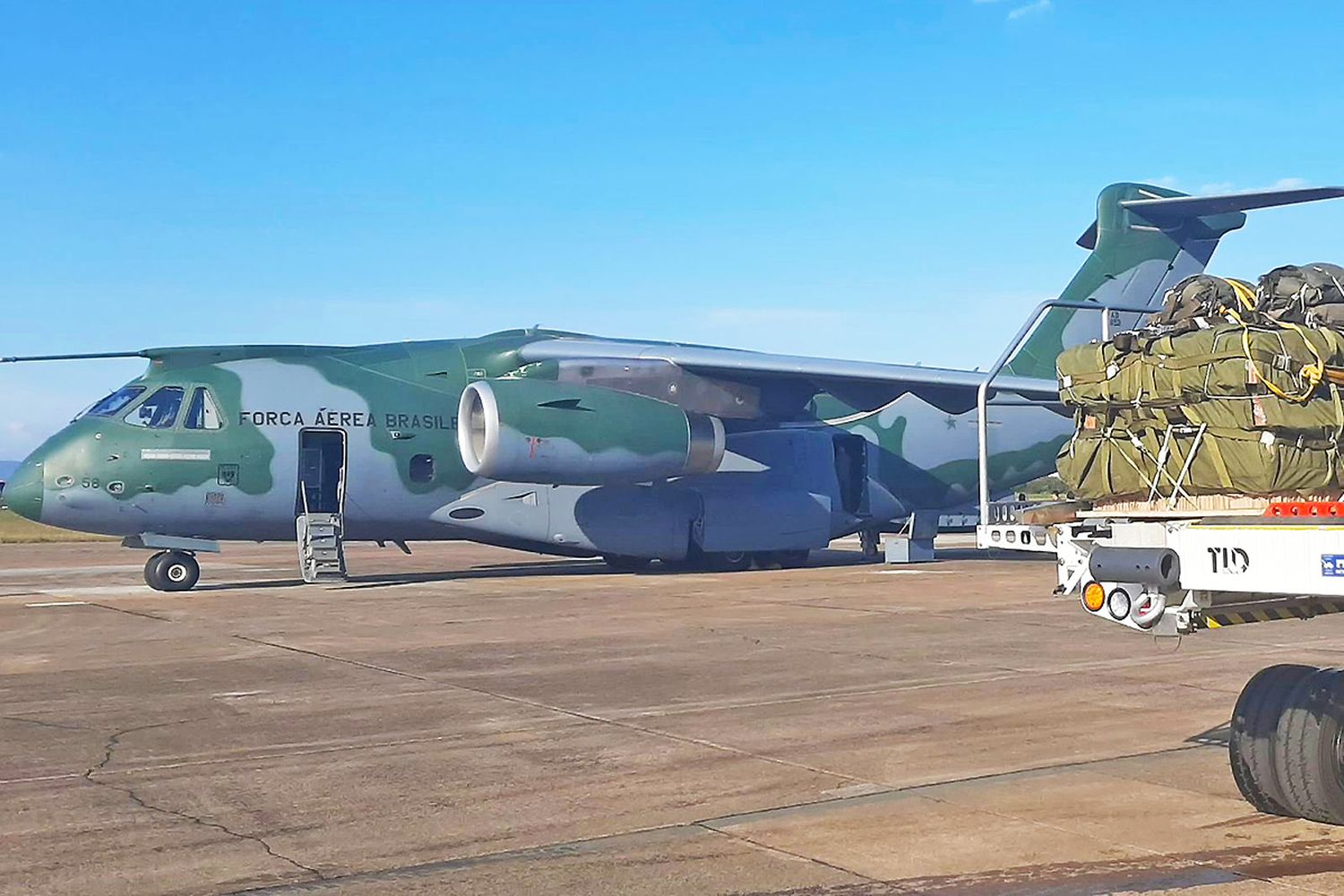Brazilian Air Force Deploys 26 Aircraft, Achieves 1,000 Flight Hours in Rio Grande do Sul Flood Relief
The Brazilian Air Force (FAB) has reached 1,000 flight hours with 26 aircraft in missions supporting the victims of the historic floods in Rio Grande do Sul. The operations have included rescuing isolated people, transporting tons of donations from the “Todos Unidos pelo Sul” («All United for the South») campaign , and installing modules for the Field Hospitals of the three Armed Forces, among other actions.
Operations coordinated by COMAE
According to the FAB, with specific doctrines and different profiles, but acting in a coordinated manner by the Aerospace Operations Command (COMAE), the vectors employed in the context of Operation Taquari 2 have been indispensable in humanitarian aid to Rio Grande do Sul. Since April 30, missions have been carried out from the Air Bases of Santa Maria (BASM), Canoas (BACO), and Florianópolis (BAFL), reports our affiliated media in Brazil, Aeroin.
“The milestone represents the prompt response of the FAB, especially of its Air Units, to meet the needs of society during the floods in Rio Grande do Sul. However, more important than the flight hours are the lives of Brazilians saved in rescues, the transportation of donations, aeromedical evacuations, and all the actions of the FAB in favor of the affected population,” highlighted the Chief of the Joint Center for Aerospace Operations of COMAE, Air Brigadier Alessandro Cramer.
Participation of various aircraft
The C-98 Caravan aircraft are operated by the Second Air Transport Squadron (2º ETA) – Pastor Squadron, the Sixth Air Transport Squadron (6º ETA) – Guará Squadron, and the Santa Maria Air Base (BASM). These aircraft have primarily conducted the logistical transportation of donations and military personnel in several flights per day.
Also participating are the C-97 Brasília aircraft, operated by the Fifth Air Transport Squadron (5º ETA) – Pegasus Squadron and the 6º ETA, as well as the C-95 Bandeirante aircraft, operated by the Third Air Transport Squadron (3º ETA) – Pioneer Squadron and also by the 2º ETA, 5º ETA, and 6º ETA.
The H-60L Black Hawk helicopters are operated by the Second Squadron of the Tenth Aviation Group (2º/10º GAV) – Pelican Squadron and the Fifth Squadron of the Eighth Aviation Group (5°/8° GAV) – Panther Squadron. Other rotary-wing vectors include the H-36 Caracal, operated by the Third Squadron of the Eighth Aviation Group (3°/8° GAV) – Puma Squadron and the First Squadron of the Eighth Aviation Group (1°/8° GAV) – Falcon Squadron.
The C-105 Amazonas aircraft, operated by the First Squadron of the Ninth Aviation Group (1°/9° GAV) – Arara Squadron and the First Squadron of the Fifteenth Aviation Group (1°/15° GAV) – Onça Squadron, have been used for aerial resupply operations such as delivering food, medicines, and other essential items. Additionally, they have been used in other operations such as transporting medical equipment and ICU Air missions.
The KC-390 Millennium vectors, operated by the First Transport Group (1º/1º GT) – Fat Squadron and the First Troop Transport Group (1º GTT) – Zeus Squadron, also perform cargo drops – the so-called aerial resupply, allowing for the transportation of a greater amount of food and medicine in a short time.

«Once again, we reaffirm the importance of the KC-390 Millennium, especially in an operation like this. We are flying 24 hours a day, the plane does not stop, only the crews change. Therefore, for us, it is a great satisfaction to be able to participate and be working in collaboration with society to help our country,” said Aviator Captain Edgar Augusto Peres, a member of the Fat Squadron.
Additionally, the aircraft have conducted the logistical transportation of materials, such as tons of donations. The KC-30 aircraft, operated by the Second Squadron of the Second Transport Group (2º/2° GT) – Corsair Squadron, and the SC-105 Amazonas aircraft, operated by the Second Squadron of the Tenth Aviation Group (2°/10° GAV) – Pelican Squadron, are part of the operation.

Additionally, the A-1M vector, operated by the First Squadron of the Tenth Aviation Group (1°/10° GAV) – Poker Squadron, has conducted mapping of structures at risk in Rio Grande do Sul, and the Remotely Piloted Aircraft (RPA) RQ-900, operated by the First Squadron of the Twelfth Aviation Group (1º/12º GAV) – Horus Squadron, has supported rescues of the victims of the rains in Rio Grande do Sul.


Comentarios
Para comentar, debés estar registrado
Por favor, iniciá sesión